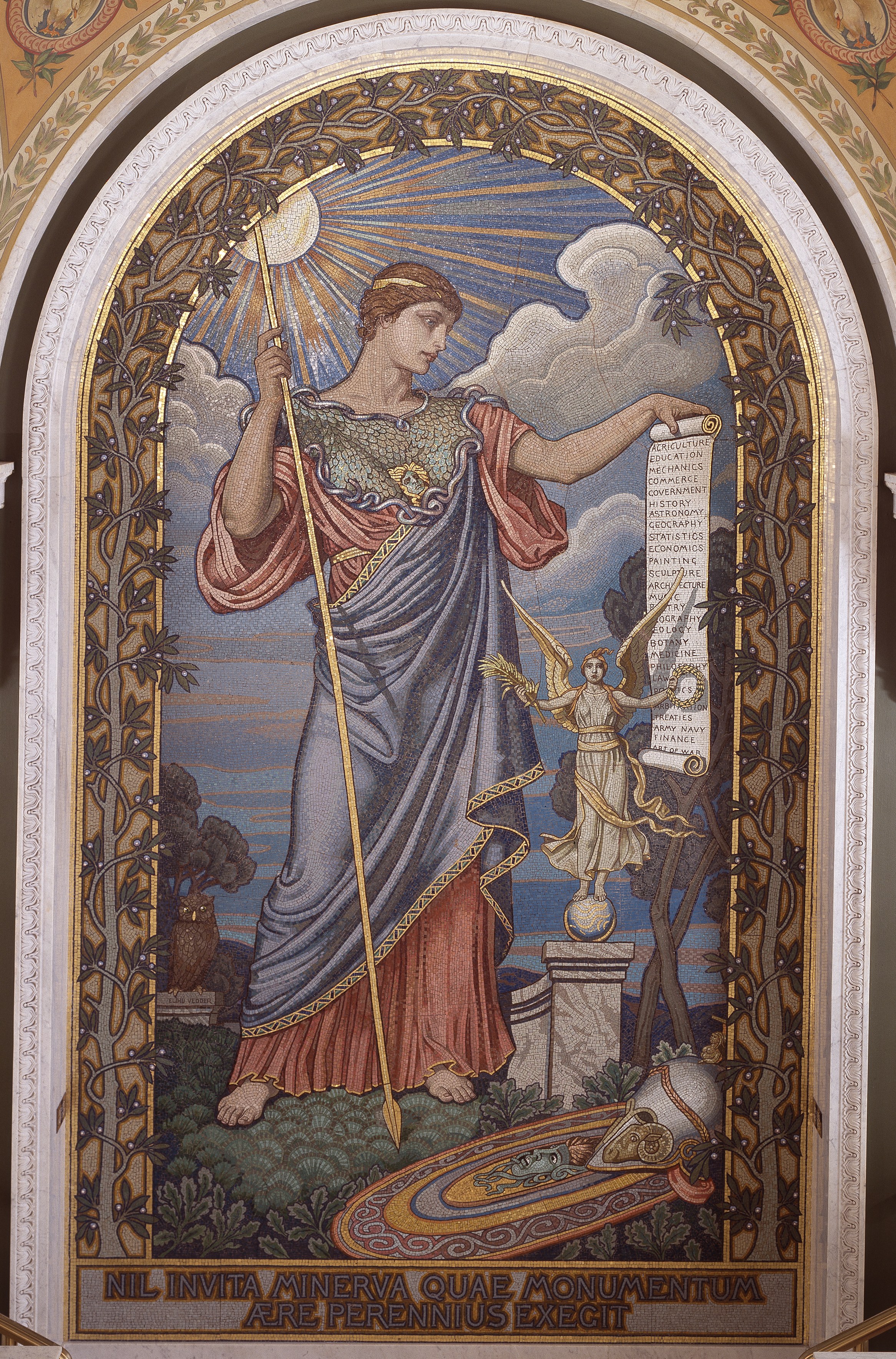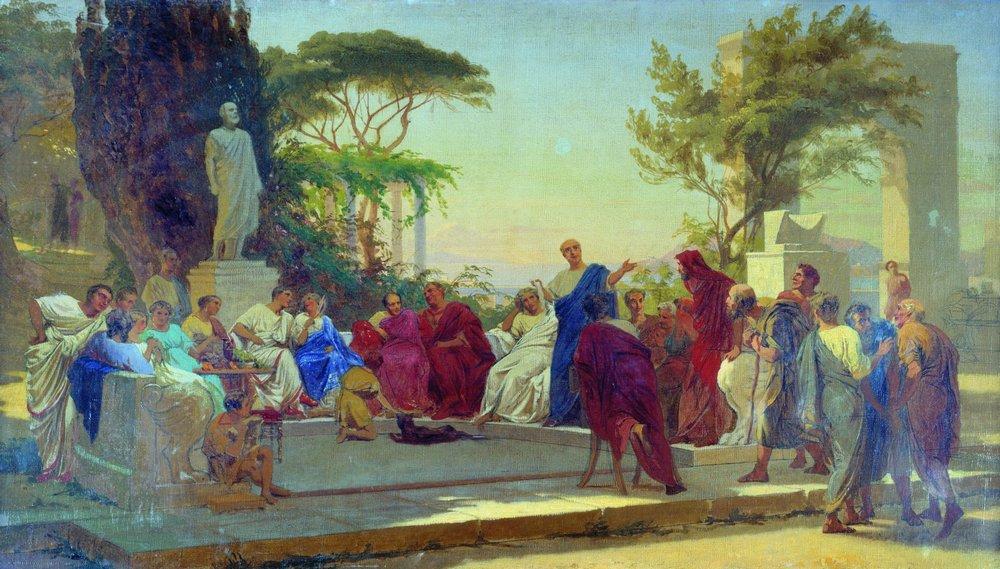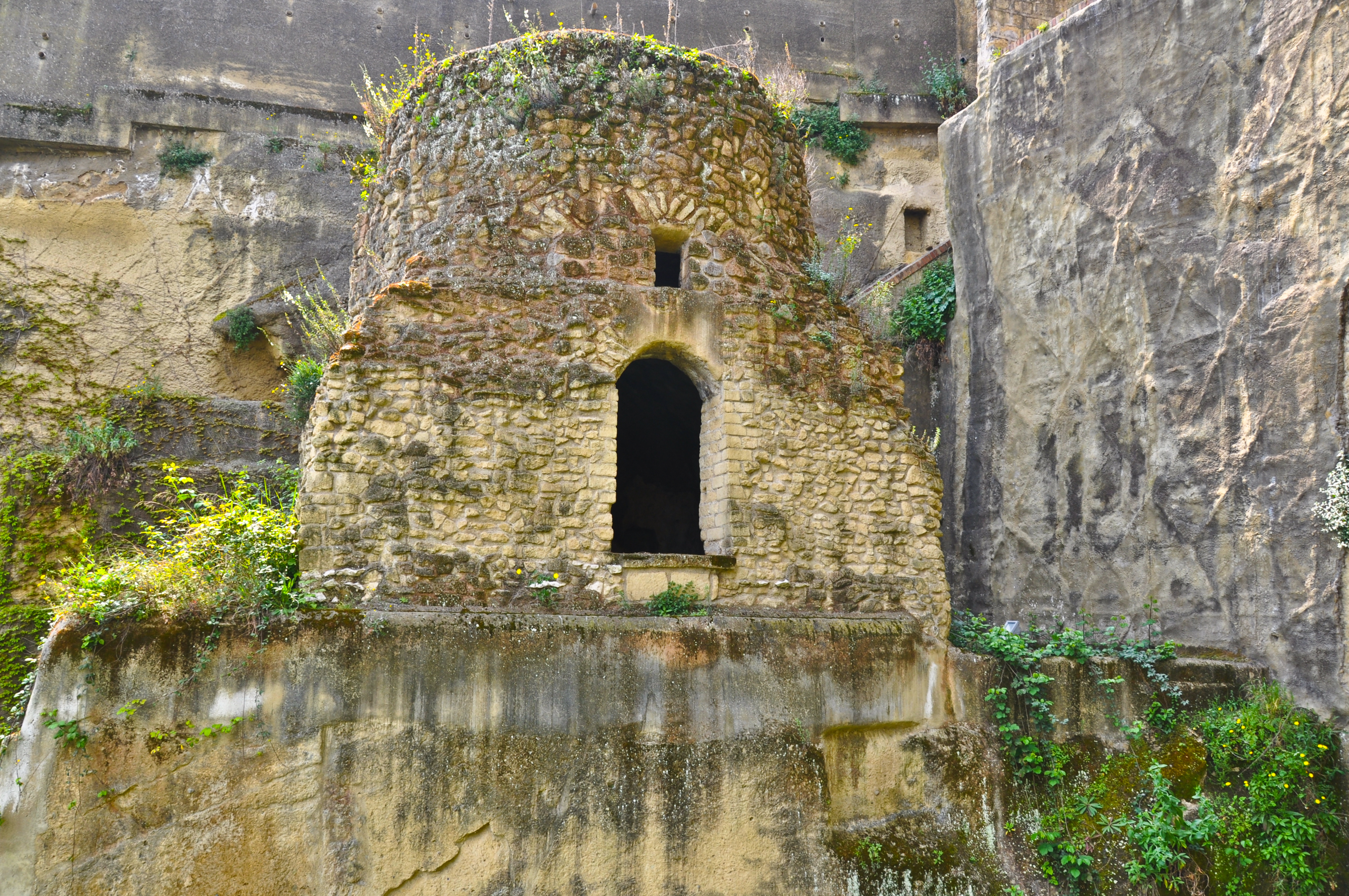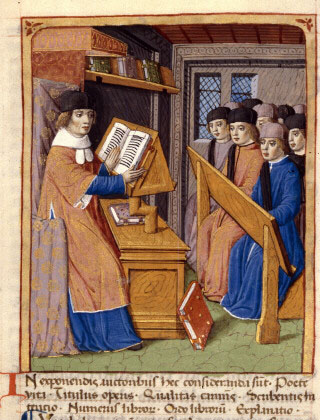|
Standing On The Shoulders Of Giants
The phrase "standing on the shoulders of giants" is a metaphor which means "using the understanding gained by major thinkers who have gone before in order to make intellectual progress". It is a metaphor of Dwarf (mythology), dwarfs standing on the shoulders of giants () and expresses the meaning of "discovering truth by building on previous discoveries". This concept has been dated to the 12th century and, according to John of Salisbury, is attributed to Bernard of Chartres. Its most familiar and popular expression occurs in a 1675 letter by Isaac Newton: "if I have seen further [than others], it is by standing on the shoulders of giants." Early references Middle Ages The earliest documented attestation of this aphorism appears in 1123 in William of Conches's Glosses on Priscian's ''Institutiones grammaticae''. Where Priscian says ''quanto juniores, tanto perspicaciores'' (young men simply can see more sharply), William writes: The ancients had only the books which they the ... [...More Info...] [...Related Items...] OR: [Wikipedia] [Google] [Baidu] |
Natura Non Facit Saltus
''Natura non facit saltus'' Alexander Baumgarten, ''Metaphysics: A Critical Translation with Kant's Elucidations'', Translated and Edited by Courtney D. Fugate and John Hymers, Bloomsbury, 2013, "Preface of the Third Edition (1750)"p. 79 n. d " aumgartenmust also have in mind Leibniz's "''natura non facit saltus'' ature does not make leaps ( NE IV, 16)." Also see Gottfried Wilhelm Leibniz, '' Nouveaux essais sur l'entendement humain'', 1704, p. 5/ref> (Latin for "nature does not make jumps") has been an important principle of natural philosophy. It appears as an axiom in the works of Gottfried Leibniz ( ''New Essays'', IV, 16: ''"la nature ne fait jamais des sauts"'', "nature never makes jumps"), one of the inventors of the infinitesimal calculus (see Law of Continuity). It is also an essential element of Charles Darwin's treatment of natural selection in his '' Origin of Species''. The Latin translation comes from Linnaeus' '' Philosophia Botanica''. Overview The principle ex ... [...More Info...] [...Related Items...] OR: [Wikipedia] [Google] [Baidu] |
Holy Roman Emperor
The Holy Roman Emperor, originally and officially the Emperor of the Romans (other), Emperor of the Romans (; ) during the Middle Ages, and also known as the Roman-German Emperor since the early modern period (; ), was the ruler and head of state of the Holy Roman Empire. The title was held in conjunction with the title of King of Italy#Kingdom of Italy (781–962), King of Italy (''Rex Italiae'') from the 8th to the 16th century, and, almost without interruption, with the title of King of Germany (''Rex Teutonicorum'', ) throughout the 12th to 18th centuries. The Holy Roman Emperor title provided the highest prestige among Christianity in the Middle Ages, medieval Catholic monarchs, because the empire was considered by the Catholic Church to be Translatio imperii, the only successor of the Roman Empire during the Middle Ages and the early modern period. Thus, in theory and diplomacy, the emperors were considered first among equalsamong other Catholic monarchs across E ... [...More Info...] [...Related Items...] OR: [Wikipedia] [Google] [Baidu] |
Pillars Of Hercules
The Pillars of Hercules are the promontory, promontories that flank the entrance to the Strait of Gibraltar. The northern Pillar, Calpe Mons, is the Rock of Gibraltar. A corresponding North African peak not being predominant, the identity of the southern Pillar, Abila Mons, has been disputed throughout history, with the two most likely candidates being Monte Hacho in Ceuta and Jebel Musa (Morocco), Jebel Musa in Morocco. The term was applied in Classical antiquity, antiquity: Pliny the Elder included the Pillars of Hercules in his ''Natural History (Pliny), Naturalis historia'' (Book III:3). History According to Greek mythology adopted by the Etruscans and Romans, when Heracles, Hercules had to perform Labours of Hercules, twelve labours, one of them (the tenth) was to fetch the Cattle of Geryon of the far West and bring them to Eurystheus; this marked the westward extent of his travels. A lost passage of Pindar quoted by Strabo was the earliest traceable reference in this c ... [...More Info...] [...Related Items...] OR: [Wikipedia] [Google] [Baidu] |
Pompey
Gnaeus Pompeius Magnus (; 29 September 106 BC – 28 September 48 BC), known in English as Pompey ( ) or Pompey the Great, was a Roman general and statesman who was prominent in the last decades of the Roman Republic. As a young man, he was a partisan and protégé of the dictator Sulla, after whose death he achieved much military and political success himself. He was an ally and a rival of Julius Caesar, and died in civil war with him. A member of the senatorial nobility, Pompey entered into a military career while still young. He rose to prominence serving Sulla as a commander in the civil war of 83–81 BC. Pompey's success as a general while young enabled him to advance directly to his first consulship without following the traditional '' cursus honorum'' (the required steps to advance in a political career). He was elected as consul on three occasions (70, 55, 52 BC). He celebrated three triumphs, served as a commander in the Sertorian War, t ... [...More Info...] [...Related Items...] OR: [Wikipedia] [Google] [Baidu] |
Plutarch
Plutarch (; , ''Ploútarchos'', ; – 120s) was a Greek Middle Platonist philosopher, historian, biographer, essayist, and priest at the Temple of Apollo (Delphi), Temple of Apollo in Delphi. He is known primarily for his ''Parallel Lives'', a series of biographies of illustrious Greeks and Romans, and ''Moralia'', a collection of essays and speeches. Upon becoming a Roman citizen, he was possibly named Lucius Mestrius Plutarchus (). Family Plutarch was born to a prominent family in the small town of Chaeronea, about east of Delphi, in the Greek region of Boeotia. His family was long established in the town; his father was named Autobulus and his grandfather was named Lamprias. His brothers, Timon and Lamprias, are frequently mentioned in his essays and dialogues, which speak of Timon in particular in the most affectionate terms. Studies and life Plutarch studied mathematics and philosophy in Athens under Ammonius of Athens, Ammonius from AD 66 to 67. He attended th ... [...More Info...] [...Related Items...] OR: [Wikipedia] [Google] [Baidu] |
Epistles (Horace)
The ''Epistles'' (or ''Letters'') of Horace were published in two books, in 20 BC and 14 BC, respectively. *''Epistularum liber primus'' (''First Book of Letters'') is the seventh work by Horace, published in the year 20 BC. This book consists of 20 Epistles. *''Epistularum liber secundus'' (''Second Book of Letters'') was published in the year 14 BC. This book consists of 3 Epistles. However, the third epistle – the Ars Poetica – is usually treated as a separate composition. Background As one commentator has put it: "Horace's ''Epistles'' may be said to be a continuation of his Satires in the form of letters... But few of the epistles are ctuallyletters except in form..."The Works of Horace Rendered into English Prose by James Lonsdale M.A. and Samuel Lee M.A. London: MacMillan and Co., 1883. Edition is available on Google Books. They do indeed contain an excellent specimen of a letter of introduction (I.9); a piece of playful banter (I.14); pieces of friendly corresp ... [...More Info...] [...Related Items...] OR: [Wikipedia] [Google] [Baidu] |
Horace
Quintus Horatius Flaccus (; 8 December 65 BC – 27 November 8 BC), Suetonius, Life of Horace commonly known in the English-speaking world as Horace (), was the leading Roman lyric poet during the time of Augustus (also known as Octavian). The rhetorician Quintilian regarded his '' Odes'' as the only Latin lyrics worth reading: "He can be lofty sometimes, yet he is also full of charm and grace, versatile in his figures, and felicitously daring in his choice of words."Quintilian 10.1.96. The only other lyrical poet Quintilian thought comparable with Horace was the now obscure poet/metrical theorist, Caesius Bassus (R. Tarrant, ''Ancient Receptions of Horace'', 280) Horace also crafted elegant hexameter verses ('' Satires'' and '' Epistles'') and caustic iambic poetry ('' Epodes''). The hexameters are amusing yet serious works, friendly in tone, leading the ancient satirist Persius to comment: "as his friend laughs, Horace slyly puts his finger on his every fault; once let ... [...More Info...] [...Related Items...] OR: [Wikipedia] [Google] [Baidu] |
Georgics
The ''Georgics'' ( ; ) is a poem by Latin poet Virgil, likely published in 29 BCE. As the name suggests (from the Greek language, Greek word , ''geōrgiká'', i.e. "agricultural [things]") the subject of the poem is agriculture; but far from being an example of peaceful rural poetry, it is a work characterized by tensions in both theme and purpose. The ''Georgics'' is considered Virgil's second major work, following his ''Eclogues'' and preceding the ''Aeneid''. The poem draws on a variety of prior sources and has influenced many later authors from antiquity to the present. Description and summary The work consists of 2,188 hexameter, hexametric verses divided into four books. The yearly timings by the rising and setting of particular stars were valid for the precession of the equinoxes, precession epoch of Virgil's time, and so are not always valid now. Book One Virgil begins his poem with a dedication to Gaius Maecenas, Maecenas, then a summary of the four books, followed by ... [...More Info...] [...Related Items...] OR: [Wikipedia] [Google] [Baidu] |
Virgil
Publius Vergilius Maro (; 15 October 70 BC21 September 19 BC), usually called Virgil or Vergil ( ) in English, was an ancient Rome, ancient Roman poet of the Augustan literature (ancient Rome), Augustan period. He composed three of the most famous poems in Latin literature: the ''Eclogues'' (or ''Bucolics''), the ''Georgics'', and the Epic poetry, epic ''Aeneid''. A number of minor poems, collected in the ''Appendix Vergiliana'', were attributed to him in ancient times, but modern scholars generally regard these works as spurious, with the possible exception of a few short pieces. Already acclaimed in his own lifetime as a classic author, Virgil rapidly replaced Ennius and other earlier authors as a standard school text, and stood as the most popular Latin poet through late antiquity, the Middle Ages, and early modernity, exerting inestimable influence on all subsequent Western literature. Geoffrey Chaucer assigned Virgil a uniquely prominent position among all the celebrities ... [...More Info...] [...Related Items...] OR: [Wikipedia] [Google] [Baidu] |
Maurus Servius Honoratus
Servius, distinguished as Servius the Grammarian ( or ), was a late fourth-century and early fifth-century grammarian. He earned a contemporary reputation as the most learned man of his generation in Italy; he authored a set of commentaries on the works of Virgil. These works, ("Exposition on Three Works of Virgil"), ("Commentaries on Virgil"), ("Commentaries on the Works of Vergil"), or ("Commentaries on the Poems of Virgil"), constituted the first incunable to be printed at Florence, by Bernardo Cennini, in 1471. In the ''Saturnalia'' of Macrobius, Servius appears as one of the interlocutors; allusions in that work and a letter from Symmachus to Servius indicate that he was not a convert to Christianity. Name The name Servius also appears as Seruius owing to the unity of the Latin letters V and U from antiquity until as late as the 18th century. Many medieval manuscripts of Servius's commentaries give him the praenomen Marius or Maurus and the cognomen Honoratu ... [...More Info...] [...Related Items...] OR: [Wikipedia] [Google] [Baidu] |
Philosophia Botanica
''Philosophia Botanica'' ("Botanical Philosophy", ed. 1, Stockholm & Amsterdam, 1751.) was published by the Swedish naturalist and physician Carl Linnaeus (1707–1778) who greatly influenced the development of botanical Taxonomy (biology), taxonomy and systematics in the 18th and 19th centuries. It is "the first textbook of descriptive systematic botany and botanical Latin". It also contains Linnaeus's first published description of his binomial nomenclature. ''Philosophia Botanica'' represents a maturing of Linnaeus's thinking on botany and its theoretical foundations, being an elaboration of ideas first published in his ''Fundamenta Botanica'' (1736) and ''Critica Botanica'' (1737), and set out in a similar way as a series of stark and uncompromising principles (aphorismen). The book also establishes a basic botanical terminology. The following principle §79 demonstrates the style of presentation and Linnaeus's method of introducing his ideas. A detailed analysis of the w ... [...More Info...] [...Related Items...] OR: [Wikipedia] [Google] [Baidu] |










